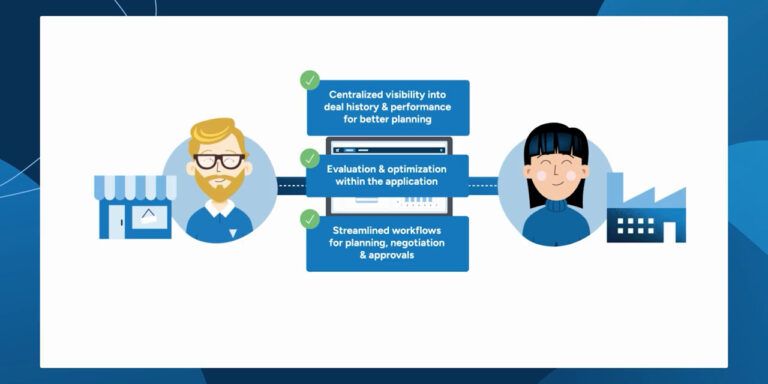Why real-time data is essential for pricing and promotions
Jul 9, 2025 • 11 min
Retailers are confronting significant challenges. Markets shift rapidly, inflation squeezes profit margins, and tariffs change costs. Consumer behavior is equally unpredictable, with viral trends causing sudden demand spikes. Meanwhile, competitors frequently adjust prices and launch promotions to capture shoppers’ attention.
Against this backdrop, real-time data is the cornerstone for successful pricing and promotional strategies. Without it, retailers risk playing constant catch-up, powerless to act against competitors and market forces.
To thrive in today’s unpredictable retail climate, retailers must be able to launch promotions first on trending products and respond swiftly to aggressive competitor pricing. This requires advanced automated systems that harness real-time data to keep them in step with a restless market.
What is real-time data for pricing and promotions?
Real-time data traditionally means information that updates continuously, allowing retailers to respond instantly to market changes. But, in retail, “real-time” isn’t just about the update frequency. What matters most is how quickly the data can be processed and translated into actionable pricing decisions. Even the most current data loses value if retailers aren’t responsive and efficient enough upon receipt.
What challenges do retailers face with real-time data?
The path to real-time data isn’t always seamless. Retailers must first navigate complex obstacles across technology, skillsets, organizational inertia, and trust in technology.
Technical capacity
Outdated technology powered by manual processes prevents retailers from analyzing real-time data with the speed and precision needed for a fast-changing retail market. For example, spreadsheet-based systems, which rely heavily on manual input and formula development, are prone to bottlenecks that strip real-time data of immediacy and relevance. These legacy constraints prevent retailers from maximizing margins and capturing revenue opportunities enabled by timely insights.
‘Modern retail demands technology that harnesses real-time data to support agile pricing strategies and rapid promotional pivots.’
Data skills gap
Analytical talent shortages create a significant barrier for retailers trying to extract insights from real-time data and translate them into pricing strategies that reflect current market conditions. Data without expertise tells an incomplete story — meaningful value simply cannot be derived from information that’s not interpretable.
When retailers do have data-savvy staff, these employees often get bogged down in tedious manual pricing work. This leaves them little time for the value-creating analysis that drives business growth.
Cultural inertia
Even when retailers address technology and skill barriers, they may face a more fundamental obstacle: resistance to change. In fact, according to a recent report by RELEX and Incisiv, inertia was the second most common challenge for retailers in achieving pricing and promotional maturity. Leaders and employees develop an “if it isn’t broken, don’t fix it” mentality, choosing familiar pricing practices over innovation.
Take teams that continue to insist on routine store visits to observe competitor assortments, even when real-time updates are available. Though some in the organization may eventually acquiesce, this deeply embedded inertia hampers retailers from fully adopting — or properly utilizing — technology that could transform their business.
Lack of trust in technology
Another fundamental barrier is also somewhat psychological. Merchants have always relied on expertise and intuition for pricing and promotions, so systems that make rapid pricing decisions based on real-time data naturally raise doubts. Can technology truly replicate their understanding of competitor strategies, customer behavior, and market shifts?
Given their expertise, such skepticism is reasonable. However, rejecting these systems outright means passing up the chance to augment human business acumen with data-driven speed and precision.
What are the benefits of real-time data for pricing and promotional strategies?
Retailers who decide it’s time to invest in a tech stack upgrade will be pleased to learn that real-time data systems generate significant measurable value for pricing, promotions, and the business.
Revenue growth
Real-time data enables retailers to instantly detect ephemeral shopping trends, positioning them to capitalize on demand surges well ahead of slower-moving competitors or before consumers shift their attention to another product in vogue. When a social media influencer promotes a product, data-savvy retailers can quickly detect the subsequent spike in search activity and launch targeted promotions in anticipation, maximizing value before the buzz around that particular product fades.
Competitive positioning also benefits massively from real-time tracking of key value items (KVIs). With this intelligence, retailers can pinpoint which KVIs competitors are neglecting or overpricing, then leverage these insights to outmaneuver them on specific products, driving store traffic and revenue growth.
Equally critical is mitigating the revenue drain from dead stock. Unsold inventory ties up capital without generating returns — a double penalty for lost opportunity and storage costs. Through real-time inventory visibility, retailers can align pricing decisions with stock levels, clearing slow-moving products before they become write-offs and converting potential losses into revenue.
Enhanced responsiveness
Market conditions change rapidly, and retailers who adapt quickly gain significant competitive advantages. For instance, instead of waiting weeks to discover that tariffs have increased product costs or that competitors have adjusted their pricing, businesses with real-time data can immediately spot these events and react before they impact profitability.
When multiple pricing opportunities arise simultaneously, real-time data helps retailers quickly identify which adjustments will most significantly impact revenue and margins, allowing them to prioritize efforts accordingly. It also powers intelligent automation that manages routine pricing activities, enabling automatic responses to market fluctuations.
Data-driven, aligned decision-making
True organizational alignment emerges when everyone works from the same foundation of information. Real-time data ensures that everyone — from the C-suite to store managers — operates from an identical, validated dataset, essentially serving as a single source of truth.
“Working from a single source of truth means fewer discrepancies and less conflict from inconsistent departmental information, leading to more cohesive pricing decisions.”
Access to relevant information transforms intuition-based pricing approaches into evidence-driven strategic planning. Concrete data supporting every decision allows managers to confidently demonstrate the link between specific actions and business outcomes. Decision-makers become accountable for their choices since results can be directly traced to individual strategies.
Improved operational efficiency
Advanced AI and automation, fueled by real-time data, tackle the tedious manual work previously handled through cumbersome processes. Rather than staff getting caught in endless update cycles or falling behind with inventory levels, competitor prices, and demand signals, automated systems can identify internal or external changes and execute optimal responses instantly. This allows pricing teams to focus on what they do best: strategic planning and exception handling.
Beyond task automation, these systems help retailers streamline and prioritize activities based on predicted business impact. When demand forecasting identifies an emerging trend, for example, the system instantly alerts retailers to maximize the opportunity’s return.
Stronger supplier relationships
Real-time data increases retailers’ value to suppliers by enabling them to position themselves as strategic, knowledgeable partners. Simply put, data-driven retailers are highly valued, with suppliers often favoring organizations armed with advanced analytics over those with no data infrastructure, even if those retailers have large purchase volumes.
“Organizations that leverage data to uncover customer behavior, competitor pricing, and optimal price points will be the first to secure premium supplier deals and funding.”
How does pricing and promotion technology leverage real-time data?
However, real-time data offers little benefit without the right technological infrastructure to analyze and apply it effectively. Modern pricing platforms have evolved to bridge this gap through real-time actionable insights, automation, advanced forecasting, and scalable cloud-native architecture. Platforms like RELEX offer these capabilities across several key areas.
Data ingestion and analysis
Advanced platforms like RELEX can selectively process specific data points rather than entire datasets, eliminating the bottlenecks that plague legacy batch processing systems. This enables retailers to make agile pricing and promotional adjustments as markets shift, instead of being constrained by scheduled updates.
When integrating data streams, retailers should prioritize platforms that don’t force vendor lock-ins or exclusive partnerships. Take RELEX, for instance: as a data-agnostic solution, it seamlessly accepts information from competitive pricing sources, promotional forecasts, transaction data, and even weather updates. This flexibility enables retailers to leverage existing data providers without the hassle of contract renegotiation or abandoning proven partnerships.
For retailers concerned about data quality, RELEX provides AI-driven data cleansing that automatically corrects errors, removes duplicates, and fills gaps using advanced statistical methods.
Live inventory integration
Building on real-time processing capabilities, next-generation platforms like RELEX weave live inventory data directly into pricing decisions, preventing retailers from promoting out-of-stock items while adjusting promotion durations to match available stock. At the store level, RELEX enables more aggressive pricing in locations with surplus inventory while preserving higher margins where stock is limited.
RELEX extends this inventory integration to strategic discounting. The system ensures unsold seasonal stock is sold profitably before new seasons begin, for example. With real-time visibility of inventory flow, retailers using RELEX can fine-tune pricing and campaigns according to product movement — keeping fast-sellers price competitive while giving slow-movers targeted promotional boosts.
Additionally, RELEX uses real-time data to reveal cross-category dynamics, showing when promotions on one product undercut sales of related items or drive sales of complementary products. Combining inventory data with promotional forecasts helps retailers craft promotional mixes that strengthen basket performance while ensuring popular offers don’t exceed stock levels.
Price rules and responsive alerts
The next layer of sophistication in solutions like RELEX involves automated responsiveness. Retailers unlock remarkable adaptability through price rules, automatically adjusting promotions and prices based on numerous real-time triggers. These include reacting to competitor actions, keeping price relationships consistent between national brands and private labels, and stopping promotions when inventory is low — tasks handled automatically without human involvement.
The RELEX price rule engine offers high configurability, allowing business users to set price rules without coding and reducing dependence on limited technical resources. It also builds trust by avoiding black box architecture in its technology. Retailers can directly access and analyze their data while understanding the logic behind every insight, creating transparency that builds confidence among those skeptical of automated decision-making.
When situations require human intervention, RELEX generates actionable alerts that immediately notify price teams. For instance, when a competitor reduces the price of milk (a typical key value item), the platform can quickly assess the threat and suggest an optimal response to counter that competitor’s gambit.
Price elasticity-focused predictions & scenario testing
Modern predictive elasticity analytics, like those provided by RELEX, demonstrate the power of real-time data for pricing. They incorporate current and predictive data, enabling more accurate determination of whether price changes will drive disproportionately large increases in sales volume and revenue. Such precision transforms promotional strategies by allowing retailers to focus budgets on price-sensitive items that respond strongly to discounts.
RELEX doesn’t present its analysis as absolute truth, however. Confidence scoring indicates data reliability, with the system offering cautious recommendations when uncertainty is high. Built-in transparency helps merchants make better-informed promotional decisions while accounting for market unpredictability.
Real-time data integration also enhances scenario planning. Instead of relying on 90-day averages, retailers can run pricing scenarios using that morning’s data. The real-time approach results in more reliable outcomes that enable pricing teams to make decisions with greater clarity and confidence.
Localized pricing and promotions
Effective localized pricing requires real-time data on regional competition, store inventory levels, local price sensitivity, and varying cost structures. RELEX provides precisely this — granular competitive, demand, and operational real-time data at the individual store or zone price level. Such detailed insights ensure pricing decisions account for local dynamics.
However, RELEX elevates this intelligence by integrating real-time weather data in its AI-driven demand forecasts, meaning retailers can modify promotional strategies based on local climate events and seasonal patterns. The platform can also identify variations and divergences in consumer preferences across neighborhoods and demographics, facilitating campaigns that resonate with specific market segments.
Promotion performance analysis through RELEX represents the final piece of the localized pricing puzzle, continuously tracking key metrics like campaign uplift, margin impact, and customer engagement across multiple local markets. Real-time feedback loops drive tactical adjustments to ongoing promotions — such as extending successful campaigns or redirecting budgets from underperforming markets — that optimize resource allocation and improve ultimate business outcomes.
How Mathem used RELEX to optimize their promotional planning
Swedish online grocery leader Mathem demonstrates how real-time, automated technology can transform promotional performance. The company previously relied on manual planning through legacy systems, which created heavy workloads and made it difficult to show promotional effectiveness to vendors.
After implementing the RELEX promotional planner to automatically analyze their real-time promotional and supply chain data, Mathem found they could plan, optimize, and evaluate their promotions with much greater impact. Within six months, they achieved impressive results:
- 56% increase in profitable promotions
- 20% boost in gross promotional sales
- 32% improvement in true lift sales
- 17% reduction in unprofitable campaigns
“RELEX gave us an automated, integrated system that provides our teams with a much deeper understanding of the factors behind successful campaigns. Working with RELEX has really helped us to run our promotions more efficiently and profitably,”
Carl-Johan Sagner, Mathem Promotional Strategy Manager
Best practices for using real-time data in pricing and promotions
Next comes the critical work of building sustainable operations through proven best practices that deliver business success.
Establish a robust data validation process
Even the most consistently reliable real-time data streams require verification. Relying on unvalidated data can trigger costly decisions caused by flawed information. Retailers should implement systematic validation checks for data inputs, such as those relating to competitors and pricing points, in the form of data quality audits, and conduct comprehensive credibility reviews for data sources during quarterly strategy sessions. By following this approach, errors and discrepancies can be detected and rectified before they have a chance to ripple through the business and damage the bottom line.
Ensure available data serves a purpose
Many retailers spend a lot on data subscriptions, but they rarely use the data to inform their decisions. Although competitive intelligence and market data offer tremendous value, they become costly overhead when left unused in email inboxes or software dashboards.
For that reason, regular data subscription reviews are recommended to confirm that spending on data aligns with actual business or operational needs. Every data stream should feed automated pricing rules, trigger meaningful alerts, or directly support strategic decisions. Data that fails these criteria represents budget that could generate better returns elsewhere.
Combat analysis paralysis
Real-time data can be a powerful source of information for retailers, but it carries risks. Teams can fall into the proverbial rabbit hole of analysis paralysis, spending excessive time examining every data point instead of making decisions.
The solution requires discipline. Avoid investigating every shift or update. Instead, develop decision frameworks that focus analysis on specific target products, such as those customers frequently price-compare — milk, bread, yogurt — and directly influence revenue.
Retailers should keep in mind that timely action often outperforms exhaustive analysis.
‘A well-informed decision made expeditiously typically delivers better results than a perfect decision that arrives too late to matter.’
Test pricing strategies before implementation
Smart retailers validate pricing and promotional strategies through scenario modeling before going live. Advanced scenario planning tools powered by real-time data help predict outcomes and refine approaches, minimizing costly surprises.
While the breakneck pace of retail makes crystal-ball accuracy impossible, robust scenario testing with current data significantly reduces risk. Retailers using platforms like RELEX can gather fresh data and run comprehensive scenarios within hours or days.
This speed advantage extends to approval workflows. Pricing teams can rapidly generate multiple scenarios, present results to management, and secure pricing decisions that move in lockstep with market fluctuations.
Reserve human expertise for complex exceptions
Exception management means applying human attention to only the complex situations that automated systems cannot resolve. It’s about smartly delegating routine tasks to technology and highlighting actions that require human judgment.
Advanced pricing platforms process real-time competitive data, inventory levels, and demand signals across thousands of products and locations to generate recommendations or execute workflows. However, humans remain essential for understanding the data in context that these systems cannot capture — think upcoming construction affecting store traffic and community events driving demand spikes.
“The division of labor between automation and humans that’s enabled by exception management fosters operational excellence — technology manages the scale, humans provide the context that makes pricing strategies resonate.”
Make real-time data a competitive advantage
Traditional data collection and pricing methods struggle to keep pace with modern market demands, leaving retailers constantly chasing rather than leading market movements. This lag creates a cascade of problems: revenue left on the table during demand spikes, competitive positioning lost to faster-moving rivals, and customer expectations unmet when promoted products go out of stock.
Forward-thinking retailers have solved this timing problem by embracing real-time data through RELEX, which enables immediate action on information as it arrives. When demand changes, prices adjust accordingly. When competitors slash prices, retailers can respond within hours instead of weeks. When inventory shifts, promotions launch automatically, or existing ones are adapted. The outcome? Revenue captured, competitors matched, and customers satisfied—all in real-time.




